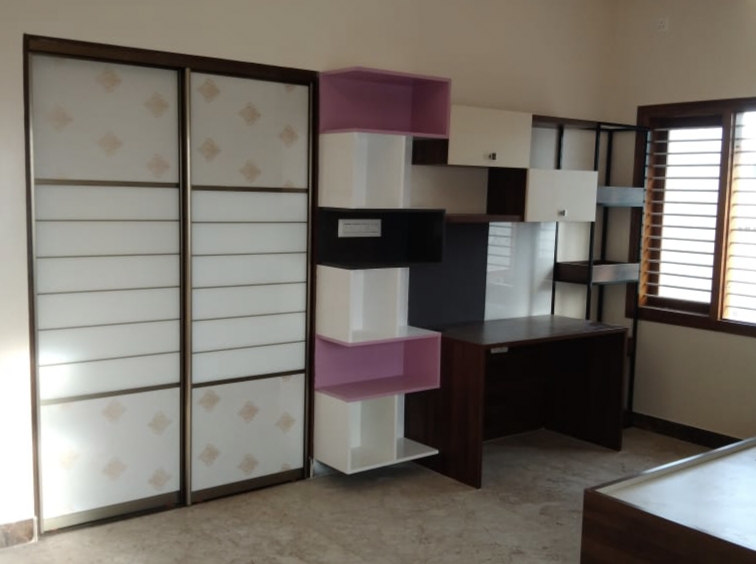
In the pursuit of creating beautiful and functional living spaces, embracing eco-friendly interior design practices has become increasingly paramount. Sustainable interior design not only enhances the aesthetics of our homes but also minimizes environmental impact and promotes healthier living. This growing awareness reflects a sentiment that embraces the idea that stylish living can also be environmentally conscious. You can consider collaborating with a skilled interior design company in Rajarajeshwari Nagar, Bangalore! These professionals have the expertise to transform your space into a haven of style and comfort.
Thankfully, advancements in technology coupled with a dedicated interior design industry pave the way for creating homes that are both aesthetically pleasing and environmentally sound places to reside. In this blog, we’ll explore various sustainable practices for eco-friendly interior design, offering inspiration and guidance for crafting green havens that harmonize with nature.
Understanding Eco-Friendly Interior Design:
Eco-friendly interior design encompasses a holistic approach to creating living spaces that prioritize environmental sustainability and human well-being. From the selection of eco-conscious materials to the implementation of energy-efficient systems and practices, every aspect of the design process is guided by principles of environmental responsibility and resource conservation. By integrating sustainable design strategies, homeowners can reduce their ecological footprint while creating spaces that are both aesthetically pleasing and environmentally conscious.
Choosing Sustainable Materials:
One of the cornerstones of eco-friendly interior design is the use of sustainable materials that minimize environmental impact and promote responsible resource use. Opting for materials such as reclaimed wood, bamboo, cork, and recycled glass not only reduces the demand for virgin resources but also adds unique character and texture to interior spaces. Additionally, choosing low-VOC (volatile organic compound) paints and finishes ensures indoor air quality remains healthy for occupants while reducing harmful emissions into the environment.
Embracing Energy Efficiency:
Energy efficiency is another essential aspect of eco-friendly interior design, as it helps reduce energy consumption and lower utility bills while minimizing greenhouse gas emissions. Incorporating energy-efficient lighting fixtures such as LED bulbs and utilizing natural light through strategically placed windows and skylights can significantly reduce electricity usage. Furthermore, investing in energy-efficient appliances and HVAC systems helps optimize energy performance and enhance overall comfort within the home.
Promoting Indoor Air Quality:
Indoor air quality plays a significant role in creating healthy and sustainable living environments. To promote indoor air quality, eco-friendly interior design practices emphasize proper ventilation, the use of non-toxic materials, and the incorporation of indoor plants to purify the air. Choosing natural, breathable fabrics for upholstery and furnishings also reduces the presence of airborne toxins and allergens, creating a healthier indoor environment for occupants.
Integrating Biophilic Design Elements:
Biophilic design, which seeks to connect people with nature through design elements and principles, is an integral component of eco-friendly interior design. Incorporating biophilic elements such as indoor plants, natural materials, and views of nature helps reduce stress, improve mental well-being, and increase productivity. Additionally, the biophilic design fosters a sense of connection to the natural world, encouraging sustainable behaviors and a deeper appreciation for the environment.
Designing for Durability and Longevity:
In the spirit of sustainability, eco-friendly interior design prioritizes durability and longevity in furnishings and materials. Choosing high-quality, well-crafted pieces that are built to last not only reduces waste but also minimizes the need for frequent replacements. Investing in timeless design elements and versatile furnishings allows homeowners to adapt their spaces to changing needs and tastes over time, reducing the environmental impact associated with disposable consumer culture.
When crafting sustainable interior designs, it’s crucial to adopt a forward-thinking approach that ensures longevity and resilience. Your eco-friendly house design should withstand the test of time and everyday use without losing its appeal. Prioritize sustainability by opting for high-quality simplicity over fleeting trends when selecting the foundational elements of your home’s interior.
Summary
Eco-friendly interior design offers a pathway to creating sustainable homes that are both aesthetically pleasing and environmentally conscious. By embracing sustainable materials, energy-efficient systems, and biophilic design principles, home interior designers in Rajarajeshwari Nagar can reduce their ecological footprint while promoting health, well-being, and connection to nature within their living spaces. As we strive to build a more sustainable future, eco-friendly interior design serves as a beacon of inspiration, demonstrating that beautiful, functional, and environmentally responsible homes are within reach.
